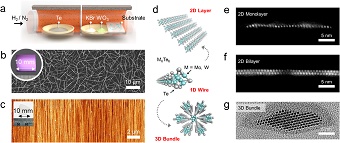Volume 65, Issue 4
Special Feature : Atomically Controllable Synthesis of Novel Materials Using Chemical Vapor Deposition
Displaying 1-10 of 10 articles from this issue
- |<
- <
- 1
- >
- >|
Preface
-
Article type: Preface
2022 Volume 65 Issue 4 Pages 167
Published: April 10, 2022
Released on J-STAGE: April 10, 2022
Download PDF (339K)
Special Feature : Atomically Controllable Synthesis of Novel Materials Using Chemical Vapor Deposition
-
Article type: Introduction
2022 Volume 65 Issue 4 Pages 168
Published: April 10, 2022
Released on J-STAGE: April 10, 2022
Download PDF (233K) -
Article type: Overview
2022 Volume 65 Issue 4 Pages 169-176
Published: April 10, 2022
Released on J-STAGE: April 10, 2022
Download PDF (1781K) -
 Article type: Current Topics
Article type: Current Topics
2022 Volume 65 Issue 4 Pages 177-183
Published: April 10, 2022
Released on J-STAGE: April 10, 2022
-
Article type: Current Topics
2022 Volume 65 Issue 4 Pages 184-189
Published: April 10, 2022
Released on J-STAGE: April 10, 2022
Download PDF (7383K) -
Article type: Current Topics
2022 Volume 65 Issue 4 Pages 190-195
Published: April 10, 2022
Released on J-STAGE: April 10, 2022
Download PDF (4065K) -
Article type: Current Topics
2022 Volume 65 Issue 4 Pages 196-201
Published: April 10, 2022
Released on J-STAGE: April 10, 2022
Download PDF (7206K)
Report
Conference Report
-
Article type: Report
2022 Volume 65 Issue 4 Pages 202-203
Published: April 10, 2022
Released on J-STAGE: April 10, 2022
Download PDF (1017K) -
Article type: Report
2022 Volume 65 Issue 4 Pages 204-205
Published: April 10, 2022
Released on J-STAGE: April 10, 2022
Download PDF (830K)
News & Trends
-
Article type: News & Trends
2022 Volume 65 Issue 4 Pages 206
Published: April 10, 2022
Released on J-STAGE: April 10, 2022
Download PDF (353K)
- |<
- <
- 1
- >
- >|





